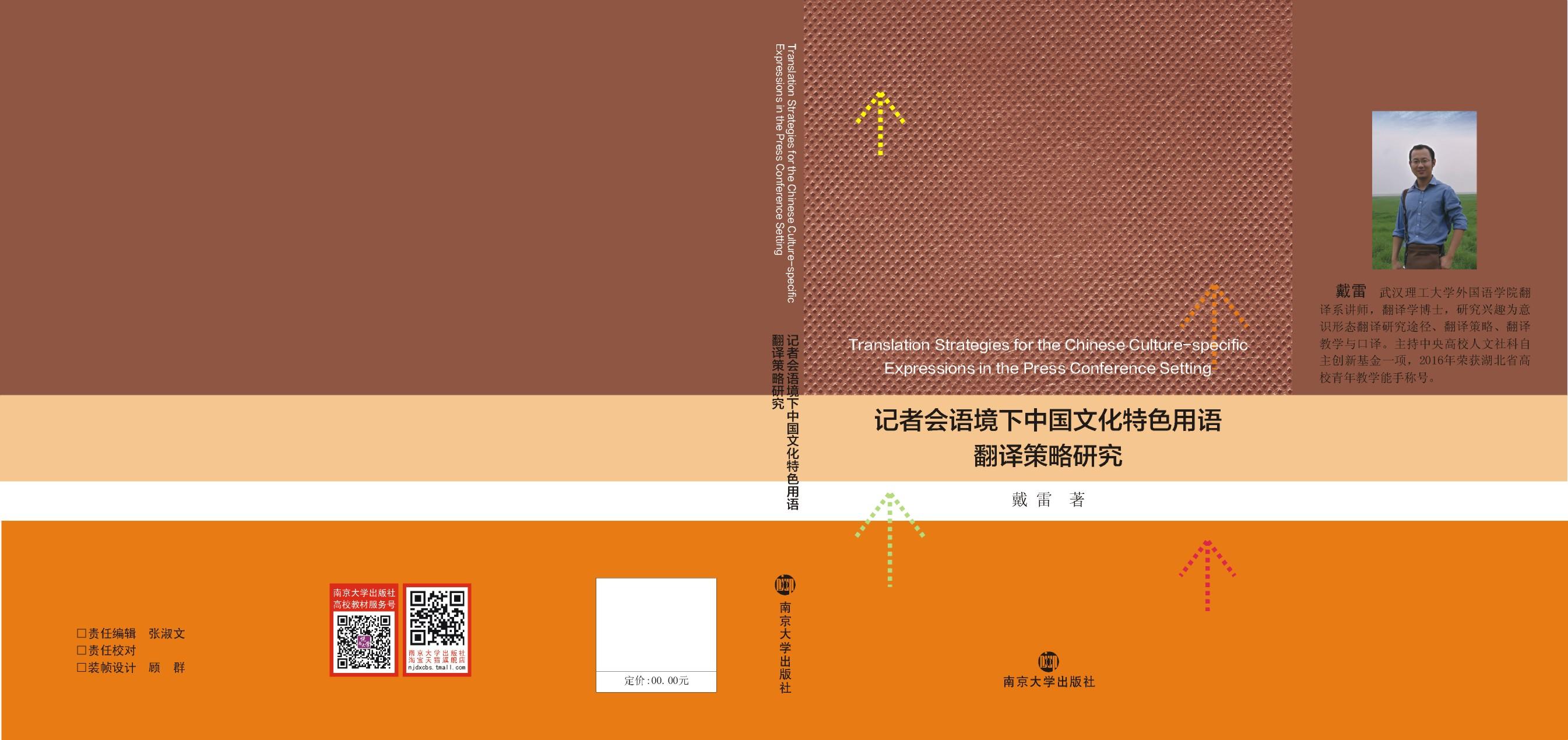Contents
Abstract 1
Contents 3
List of figures and tables 6
List of abbreviations and special usages 8
Chapter 1 Introduction 11
1.1 Research overview 11
1.2 Research keywords 15
1.3 Research significance 17
1.4 Research data and methodology 19
1.5 Research originality 19
1.6 Research outline 21
Chapter 2 Contextualizing interpreting: the interpreter’s dynamic adaptation and selection 24
2.1 Academic controversies over context 25
2.1.1 The situational / sociocultural approaches 25
2.1.2 The cognitive / psychological approaches 27
2.1.3 The synergy of the two approaches 29
2.2 Contextualizing interpreting 30
2.3 Interpreters’ dynamic adaptation and selection 32
2.3.1 Review on the contextual adaptation theory 32
2.3.2 Review on the eco-translatology theory of adaptation and selection 34
Conclusion 36
Chapter 3 Theoretical approaches to the studies of translation strategies for cultural expressions 39
3.1 The cultural studies approach 41
3.1.1 The origin, development and review of the approach 42
3.1.2 Foreignizing and domesticating 46
3.1.2.1 Conceptual prototypes and Venuti’s development 46
3.1.2.2 A critical review of Venuti’s dichotomy of translation strategies 49
3.2 The interpretive approach 54
3.2.1Content and significance 54
3.2.2The equivalence theory vs. the interpretive theory 56
3.3 The equivalence approach 58
3.3.1 Translation strategies from the perspective of cultural conversion and gaps 59
3.3.2 A review of equivalence and translatability: the omitting strategy 61
3.3.2.1 Reflections upon the controversies over equivalence in Translation Studies 61
3.3.2.2 Review upon (un)translatability 62
3.3.3 An ideal prerequisite for exploring translatability 64
3.4 The translation purpose approach 65
3.4.1 Translation as a purposeful activity: a review of the skopos theory 66
3.4.2 Analysis of the skopos theory’s emphasis on the target audience’s needs 69
3.4.3 The end justifies the means: a critical reflection upon the skopos theory 70
3.5 The descriptive translation studies paradigm 73
3.5.1 Approach or paradigm 74
3.5.2 Review of the prescriptive translation studies paradigm 74
3.5.3 Review of the descriptive translation studies paradigm 76
3.5.3.1 Translation norms in DTS 77
3.5.3.2 Contextualization in DTS 78
3.5.3.3 The descriptive-explanatory nature of DTS 79
3.5.3.4 The product-oriented nature of DTS 81
Conclusion 83
Chapter 4 A critical review of previous research on translation strategies 88
4.1 Linguistics-oriented research 88
4.1.1 Representative theories 88
4.1.2 Reflections and criticisms. 91
4.2 Greater-contexts-oriented research 94
4.2.1 Representative theories 94
4.2.2 Reflections and criticisms. 98
Conclusion 100
Chapter 5 Methodology 102
5.1 Theoretical framework and the four translation strategies 103
5.1.1 Constituting a solid theoretical framework 103
5.1.2 Fortifying the explanatory power of the plural theories. 104
5.1.3 The four translation strategies 105
5.1.3.1 Translation theories, strategies and methods: differences and correlations 106
5.1.3.2 Justifying the four strategies deduced from the theoretical framework. 108
5.2 The synergy of text and context 111
5.3 Data collection and categorization 114
5.3.1 Categories and features of data 114
5.3.2 The establishment of the bilingual parallel corpora. 115
5.4 Research ethics and researcher’s reflexivity 116
5.5 Research procedures, questions and methods 117
5.5.1 The 1st research procedure 117
5.5.2 The 2nd research procedure. 119
5.5.3 The 3rd research procedure 120
Conclusion 121
Chapter 6 Establishment of the specialized corpora of the culture-specific expressions in the Premier’s
press conferences 2004-2013 123
6.1 Components and coding methods of the specialized corpora 123
6.1.1 A basic structure 124
6.1.2 More complex coding strategies 126
6.2 The root factors of the building and the coding of the specialized corpora 129
6.2.1 The definition of the culture-specific expression in this study 130
6.2.1.1 Leppihalme’s definition 130
6.2.1.2 The (re)definition of the culture-specific expression in this study 130
6.2.2 The screening principles for the culture-specific expressions 132
6.2.2.1 Obscurities in the culture-specific expressions 132
6.2.2.2 Critical errors in interpretations 133
6.2.3 Definitions of the five categories of the cultural expressions with illustrations 133
6.2.3.1 Historical and social expressions 134
6.2.3.2 Poems 134
6.2.3.3 Traditional (four-character) idioms 135
6.2.3.4 Cultural metaphors 136
6.2.3.5 Aphorisms and adages 137
6.2.4 Basic principles on how to categorize the culture-specific expressions 138
6.2.4.1 Contexts in mind 138
6.2.4.2 Ways to demarcate categories with border fuzziness 140
6.2.5 Identifying principles for the translation strategies 142
Conclusion 142
Chapter 7 Quantitative analysis: translation norms for the culture-specific expressions 144
7.1 Quantitative analysis of the combined corpora: the initial hypotheses 144
7.2 Verifying the hypotheses with the other three corpora 147
7.2.1 The quantitative analysis of the 2008 corpus 148
7.2.2 The quantitative analysis of the 2012 corpus 150
7.2.3 The quantitative analysis of the 2013 corpus 152
7.3 The quantitative analysis of Fei Shengchao’s three corpora 2006-2008 154
7.4 The quantitative analysis of Zhang Lu’s three corpora 2010-2012 155
7.5 Comparing Fei and Zhang on translation strategies: the inference 156
Conclusion 158
Chapter 8 Qualitative analysis: norm-based sample analysis 161
8.1 Qualitative analysis: the reasons for the norms 161
8.2 Qualitative analysis: norm-based sample analysis 163
8.2.1 Purpose of analysis 163
8.2.2 Characteristics of the samples to be analyzed. 164
8.2.3 Sample analysis 164
8.3 Analysis of the government interpreters’ own feelings 179
8.3.1 Analysis of Dai Qingli’s main points 180
8.3.2 Analysis of Fei Shengchao’s main points 181
8.3.3 Analysis of Xu Hui’s main points 182
Conclusion 183
Chapter 9 Major conclusions and implications 185
9.1 Research findings and contributions 185
9.2 Achieving the research aim: a methodological purview 189
9.3 Core argument and its theoretical reflections 192
9.4 Research limitations, implications and outlooks 184
Appendix: Bilingual parallel specialized corpora of culture-specific expressions 2004-2013 198
Bibliography

